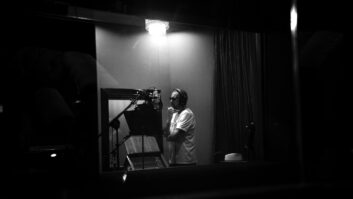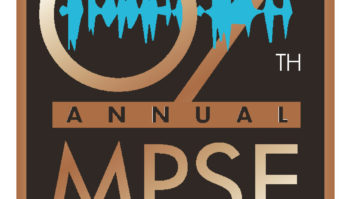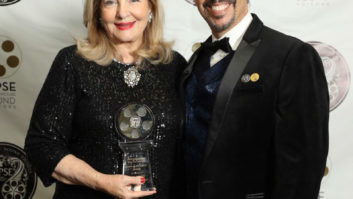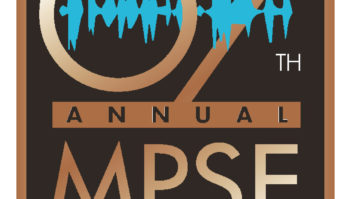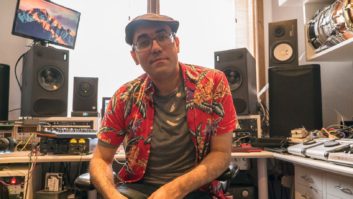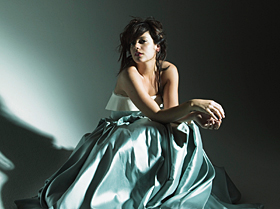
Lily Allen
Photo: Simon Emmet
Forget about the tabloid stories you might’ve read during the past year about 23-year-old Lily Allen, the prodigiously talented British singer/
songwriter whose 2006 debut album, Alright, Still, was a surprise hit in the U.S. and around the world, thanks in part to the success of the buoyant reggae-pop single “Smile.” The sensationalistic tales of possible misbehavior at an awards show, around London and in the South of France have nothing to do with her music, and to prove it she’s just put out a sophomore disc that’s even better than her first. It’s Not Me, It’s You (in stores February 10) offers up a dozen more songs that show her acerbic (the British might call it “cheeky”) wit, acute skills of observation, frank views on relationships and appealing everywoman persona.
Whereas Alright, Still had seven different producers and as many mixers, It’s Not Me, It’s You is a complete collaboration between Allen and producer/engineer/musician/songwriter Greg Kurstin, who had worked on three tracks on Allen’s debut.
“She was in the midst of recording her first album when I met her,” Kurstin says from his Echo Studio project room in the Los Feliz section of L.A. “I was in England working on some other things and her A&R guy asked if I wanted to meet her. I checked out a mix CD of a few of her songs and I liked what she was doing, so we met up in the studio and we ended up writing a song together, ‘Everything Is Wonderful.’ About a week later, I listened back to it and decided I really liked it, so we took it from there. She came out to L.A. Eventually and we did three songs in a week at my studio.
“For the songs we did together for her first record, I had a few tracks that I had started,” he continues. “I’d play her ideas, and she’d say, ‘Oh, I like that,’ or, ‘What if we changed that this way,’ and she’d start writing lyrics and then I’d develop the track more. The song ‘Alfie’ we created from scratch. We listened to a few songs for inspiration, then I built the track quickly in Logic.”
For her sophomore effort, Allen says in her current record company bio, “I wanted to work with one person from start to finish, to make it one body of work. I wanted it to feel like it had some sort of integrity…We decided to try and make bigger-sounding, more ethereal, real songs…I think I’ve grown up a bit as a person and I hope it reflects that.”
Indeed, there is a unified feeling to the album, even as it jumps across an eclectic set of genres, from the Euro-disco of “I Could Say,” to the Spaghetti Western drive of “It’s Not Fair,” the English music hall bounce of “22” and the unexpectedly charming “F*** You,” the country vibe of “Him” and the scratchy ’30s-style sonics of “He Wasn’t There.” And while Kurstin’s keyboards and sequencers dominate many tracks, there’s also plenty of interesting instrumental and textural depth, from banjo to accordion to harpsichord, as well as finger-snaps and hand-claps, though some of those textural elements are actually synth-based replicas.
Lyrically, the themes range from incisive glimpses of male-female dynamics and sexuality — sometimes biting and sarcastic, sometimes tender, sometimes joyfully banal — to frank takes on drug abuse and racism. Her cleverness doesn’t call attention to itself; rather, many of her songs feel as though we’re listening to an audio diary. “I find it hard to write songs about nothing,” she comments. “I try to write things that are both relevant to my life — which is totally weird and surreal — and are also universal.”
In Kurstin, Allen found the perfect foil. He’s a nice, easygoing guy with wonderfully eclectic taste and an impressive track record as a writer/producer that includes work with a host of top women singers, including Natasha Bedingfield, Kylie Minogue, Sia, Britney Spears and Donna Summer, as well as adventurous male artists ranging from the Flaming Lips to Beck. Kurstin and singer Inara George (daughter of late Little Feat leader Lowell George) also comprise the ultracool duo The Bird & The Bee, whose fine second disc, Ray Guns Are Not Just the Future, was just released at the end of January. In fact, that disc and Allen’s were being made simultaneously, each influencing the other to a degree. “I might do something with Lily I enjoyed, maybe a texture or some new thing I worked out, so I might bring something like it — a version of it — to The Bird & The Bee and vice versa,” he notes.
Work on It’s Not Me, It’s You began in mid-2007 with writing sessions at a rented cottage in the village of Morten-in-Marsh in the heart of the picturesque Cotswolds area of Gloucestershire in Southwestern England. “I built a laptop studio there,” Kurstin says. “Then I built another one at this castle called Lipiatt Park [also in Gloucestershire]. I had my laptop with Logic and then I rented 1073 Neves and an 1176. For the microphone, I just used a [Neumann] U87; that was all the outboard stuff I had. Then I had some instruments around, like a piano, an acoustic guitar, a Fender P-Bass, a Telecaster guitar and a [Clavia] Nord Electro MIDI controller. That room was kind of challenging because the sound was so echo-y with the stone everywhere, so the vocals had so much natural reverb and it picked up every little foot noise.”
For the actual writing process, “I break out little piano riffs or simple guitar riffs and she’ll like some and reject others. I have to pull out whatever will inspire the best songs, so if she’s not feeling it right off the bat, it’s usually not going to happen. That happens a lot in the songwriting process, and that’s fine. If she likes an idea, maybe I’ll put it on a loop for her and then, literally, like half-an-hour later, she’ll say, ‘Okay, I have something,’ and she’ll sing in what she has — it might be a verse or a chorus — and then once I hear what she’s doing lyrically, I’ll start to work on the track. The lyrics will often give me ideas where to take the track. Usually, by the end of the day I’ll have a finished demo of a song. We work pretty quickly together.
“Production-wise, I’ll try out all sorts of things — trial and error — and sometimes it takes me forever,” he adds. “I might try 100 things in a chorus until I can figure out how to make it work. Sometimes it comes together easily — like ‘Everyone’s at It’ and ‘Fear’ came together quickly — but it’s tricky; you can’t predict what’s going to take a long time.”
After the writing and preliminary production sessions in England, work shifted a few months later, mostly to Kurstin’s studio and Dave Trumfio’s Kingsize Soundlabs in the Silver Lake district of L.A. Kurstin’s room contains “a computer and desktop and a bunch of keyboards and various toys to the left and right of me,” he says. “Probably my main ones are a Prophet 5, Minimoog, ARP String Ensemble, B3, Clavinet, Rhodes, and various guitars and basses. I have stacks of keyboards in another room, too, including some weird ones, like the EMS synth. I also have a converted closet that I turned into a vocal booth.”
Allen is an exceptional singer, and Kurstin showcases her voice to the fullest over the course of the album’s dozen tracks, intricately layering her harmonies, using effects sparingly but effectively, and letting her solid lead vocals carry the melodies. “I love working on the harmonies; it’s one of my favorite things to do,” he comments. “Sometimes, I’ll work them out; other times, I’ll have her improvise a harmony track to see what she comes up with. She’s got a really good ear.”
On a song like “Fear,” which is thick with backing vocals, “I probably have six to 12 in that chorus. I’ll have a group and then bring up maybe one or two as the lead and have the other ones as more ambient support. I’ve been into threes recently for some reason. I used to be into pairs, but I’ve been into threes and sixes lately.”
Kurstin put some real guitar, bass and drums on the album — as well as conventional (i.e., non-synth) keyboards — but then there are also guitar-like lines on a song like “Fear,” courtesy of a 360 Systems digital Mellotron program that he put into Logic and then played as a keyboard, an accordion that is from samples (even though Kurstin can play the real thing) and synth bass frequently augmenting real bass. “Go Back to the Start” opens with weird electronic sounds that came from a distorted Roland 808 kick drum sound; “Chinese” features what sounds like a harpsichord, but is actually a 12-string guitar sample played on a keyboard; and the noisy old-record sound of “He Wasn’t There” comes from the cellophane disks of an old Optigan, a favorite of Tom Waits (among others).
Throughout the process, Allen offered her opinions on Kurstin’s production choices, and for the most part they were in sync throughout the whole project. “She was really easy to work with,” Kurstin says. “I always looked for her input and approval on things, and she had some good ideas of her own.”
Kurstin mixed the album at home, also in Logic. “It’s what I learned on,” he explains. “It’s the MIDI thing: being able to pull up my library of sounds real quickly, and keeping the stuff MIDI so I can change the sound later and not have to commit to a certain sound. That can be a good thing and a bad thing, I suppose, but it’s mostly been a good thing for me, and it definitely was on this album.”
